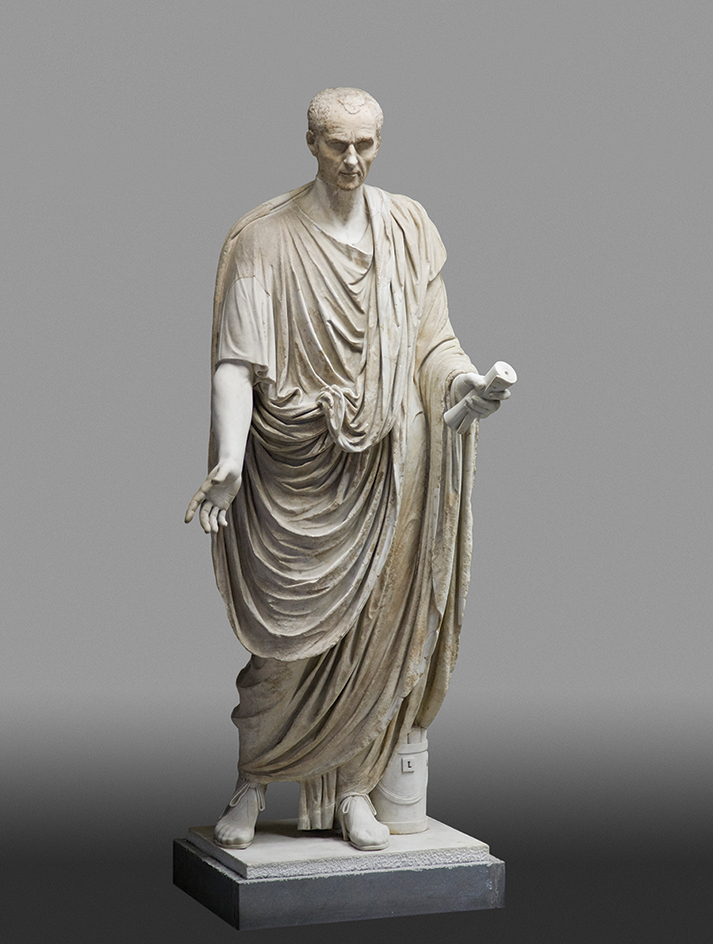Toga, << TOH guh, >> was the outer garment worn by the citizens of ancient Rome. It had a semicircular or oval shape. The toga was wrapped around the body and allowed to fall to the feet in graceful folds. It was usually worn over a loose shirt called a tunic that hung to the knees or below. The Romans wore high shoes called calcei with the toga. At first, both men and women wore togas. But in time, women began to wear a rectangular cloak called a palla instead.

Through the years, the Romans changed the size of the toga and the manner of draping it. The earliest togas were short, like the Etruscan garment on which they were based. Over time, togas became larger, heavier, and more cumbersome, as elaborate ways of draping were developed to hold them more securely in place. Togas eventually became wide enough to wrap around the body two or three times.
The Romans used soft woolen fabrics to make togas. The ordinary citizen usually wore an unbleached white toga. Colored borders or colored fabric showed rank or station. For example, a candidate for public office wore a bleached, brilliantly white toga called the toga candida. Public officials and some priests wore a purple-bordered white toga called the toga praetexta at government functions. Boys also wore the fancy toga praetexta until they put on the natural white toga virilis, or toga of manhood, at about the age of 14 to 17. Generals wore a richly decorated purple toga called the toga purpurea, or toga picta, during celebrations of military victories. From the time of Augustus, who ruled from 27 B.C. to A.D. 14, only the emperor wore the purple toga.
The toga came to stand for the civilian, rather than the military, life. In the 40’s B.C., the Roman orator and statesman Cicero wrote in Latin, “Let arms give way before the toga.”
